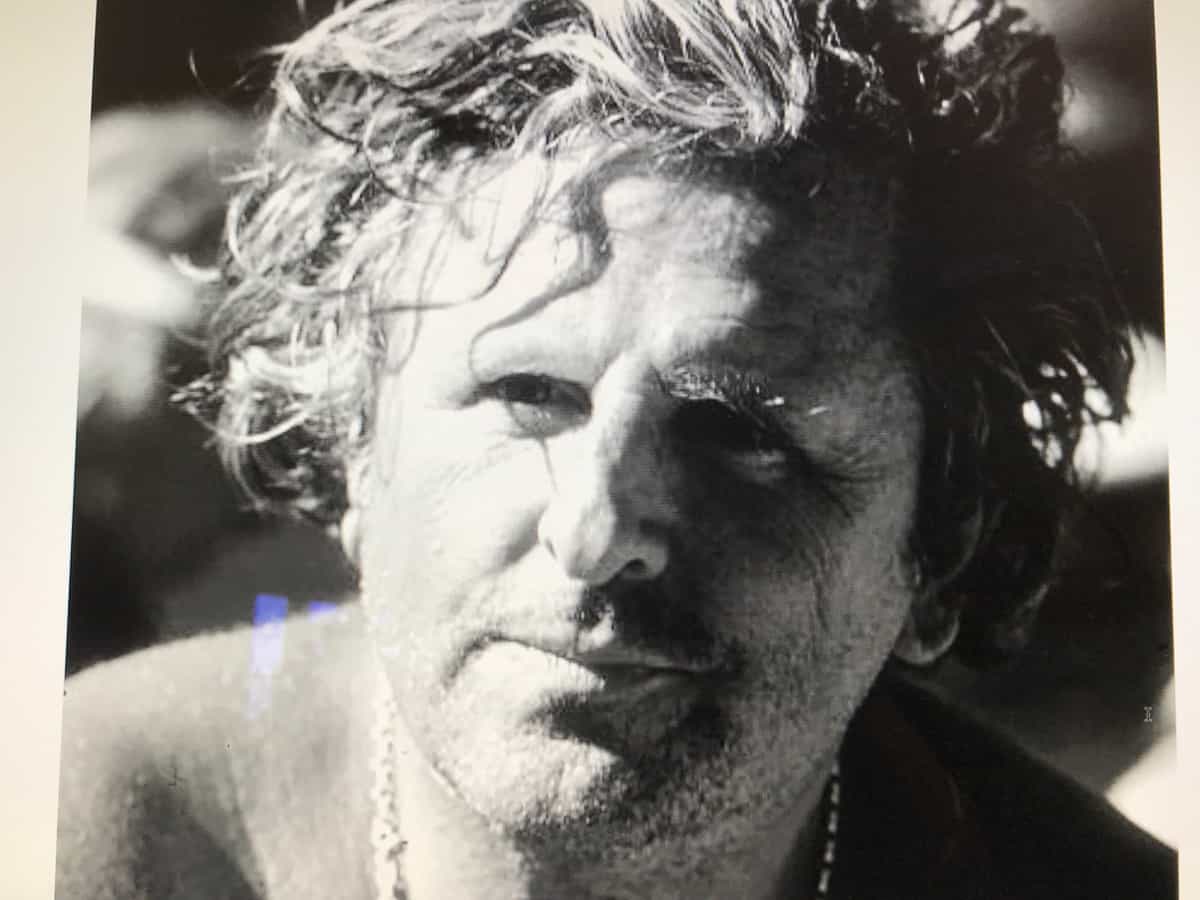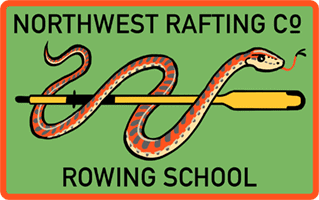Remembering Vladimir Kovalik
This week we said goodbye to an industry legend. Vladimir Kovalik made an impact in the world of rafting through his gear innovations, tenacity, and passion for rivers. The following story was written a few years ago by co-founder of ECHO River Trips, Dick Linford, in his book Halfway to Halfway.
Vladimir Kovalik
Written by Dick Linford
WE CALLED HIM VK OR VLAD BECAUSE HIS FULL NAME, Vladimir Kovalik was such a mouthful. Sometimes, when his behavior warranted it—which was often—we called him Crazy Vlad, or sometimes The Cancelled Czech. The amazing thing is that he rarely talked about his past, and his past is a story that would make a fine book, and then a movie. Starring Daniel Craig maybe. It would be an action movie, involving being shot at by Germans, escaping from a train headed for Siberia; sneaking across the Iron Curtain; coming to America; going to Stanford; working in intelligence in Viet Nam, circumnavigating the earth by motorcycle, bus, ship and train; and becoming a river outfitter. Had we known about his many escapes along the way we might have called him Houdini.

Vladimir Kovalik
VK was born in 1928 in Poprad, a small town in what was then eastern Czechoslovakia. In 1993, in an amicable split called “The Velvet Divorce,” the western part of the country became The Czech Republic and the eastern part became Slovakia. Poprad is now in Slovakia. His father was an engineer, and an important man in the community.
VK was ten years old when the Germans invaded Czechoslovakia. Although his village was far from the front, the Czech partisans were waging guerilla warfare against their invaders even in his rural area. One of his vivid memories of those years was when he was wandering the woods near town and smelled something terrible. Upon investigation he found a body of a German soldier who had been killed by partisans. A large black German Shepard was standing guard over the soldier. When VK approached, the dog growled menacingly. He wouldn’t let VK near his dead master.
VK went home and got a bowl of milk, returned to the scene, and slowly approached the dog, offering him the milk. Close to starvation, the dog alternated between growling and whining as VK slowly pushed the bowl toward him. Finally the dog gave in and licked the bowl clean. Then he reluctantly let VK pet him. VK petted the dog for a while, picked up the bowl, and headed home. The dog followed him. He told his father about the soldier and they gathered some friends, who went out and buried him, marking the grave with a cross made of sticks.
The dog meanwhile had found a new master. He followed VK everywhere, and would stand just to his right and a bit behind. If anyone reached into a pocket for something the dog would growl a warning: “Don’t go for a weapon.” When VK went to school the dog followed, and sat outside until school was over. He named the dog Greif, the Czech word for griffin, the mythical beast with wings, the head of an eagle, and the body of a lion—whose job was to guard treasure.
In 1944, when VK was sixteen, the Germans were losing the war and were desperate for both soldiers and factory workers. They started drafting young Czechs. VK’s father feared that VK would be conscripted. He also knew that a west-bound train was coming through town, said to be carrying military scrap metal back to Germany to be re-used. He decided that the best thing for VK to do was to hitch a ride on the train to a small town a 150 or so miles west of Poprad, where he would be taken in by his uncle, who was a farmer and active with the partisans.
When the train arrived, his father found that no one was riding in the caboose, so he bundled VK up, sneaked him into the caboose, and gave him a cigar, telling him that, when he got really cold he should take a couple puffs on it and that would warm him up.
The train was very slow and it was very cold. In a few hours VK had smoked the cigar and was freezing. He decided that he had to get to the engine to get warm, regardless of the consequences. This was, of course, a steam engine, driven by heat from burning coal, so the engine room would be warm if not hot.
He left the caboose, climbed the ladder to the top of the next car, and slowly made his way to the engine. Suddenly someone yelled in German for him to stop. He turned and saw that a soldier had opened a door on the roof of the car, and that he had a rifle. Not thinking clearly. VK continued toward the engine. The soldier shot at him. VK could either surrender or jump. He jumped, hitting the ground and rolling several times before stopping. He was quickly captured by Slovak police working for the Germans, imprisoned and interrogated for a week, and then conscripted into a small army unit composed equally of German and Czech conscripts. He was given a gun and trained in the use of anti-tank weapons. On their first patrol the unit attacked by partisans. One German was wounded and the rest scattered. VK hid in the woods. There he made contact with the partisans, who helped him find his uncle. He found out later that the train he was on was not carrying scrap metal. It was secretly carrying German soldiers to the western front. Shortly after Vladimir jumped, the train entered a tunnel where the partisans had set explosives. The engine was blown up and everyone on the train was killed.
So VK had three escapes on this one adventure. He escaped town on the train, escaped the Germans by jumping from the train, and escaped the Germans in the shootout. VK spent the rest of 1944 and early 1945 with his uncle. As the Russians poured in from the east, the German army retreated, but destroyed as many roads and telephone and telegraph lines as they could, making travel and communication virtually impossible. The country was in chaos, and VK wanted to go home. He knew that his parents didn’t even know if he was alive, and he was homesick. His uncle had taught him how to live off the land by seeking food stored in barns and cached in remote huts for shepherds. It took several weeks to reach home, and when he arrived he was so thin and haggard that his mother didn’t recognize him at first. She thought he was just another of the many stray children seeking food and shelter. It took him some time to recover.
With considerable help from the Czech partisans, the Russians forced the Germans out of Czechoslovakia by early 1945. The war in Europe officially ended on May 18, 1945. The Czechs evicted over two million ethnic Germans between May and August of that year. Most of them went to The Federal Republic of Germany, better known as West Germany. About 600,000 ended up in The German Democratic Republic, or East Germany. The name is a perfect example of Orwellian doublespeak. The country was neither democratic nor republican.
And of course the Russian “liberators” didn’t exactly leave. Along with many other eastern European countries, Czechoslovakia became a satellite state of the Union of Soviet Socialist Republics, or USSR. The Iron Curtain dropped across Europe, and Czechoslovakia became part of the Eastern Bloc. The Russians were an occupying force no better than the Germans, but they didn’t need young men for the military or factory work, so VK was safe.
He lived a fairly normal, somewhat privileged life for a few years, going to school and doing what young men of his social class did. He hunted, hiked, climbed mountains and even floated the Vah River on a German inflatable assault raft he and some friends found. Thus began his love of rivers.
At first his life was not terribly affected by Russian domination but, like most Czechs and Slovaks, he resented Communist repression, and yearned for national independence. He and his friends watched a lot of American movies, especially westerns, which gave them a very bad idea. They decided to make up some WANTED: DEAD OR ALIVE posters like they saw in the movies, and place a photograph of Stalin on them with a list of his crimes. The reward offered was insultingly small. Many people thought the posters were funny, but Communists have never been known for their keen sense of humor. It didn’t take them long to figure out who did it, and Vladimir and his two friends were sent to a prison in Bratislava, a large city on the Danube.
The prison was a converted school and most prisoners were there for minor offences. Security was relatively lax. So were health conditions. The place was cold and damp; it was winter, and prisoners were often beaten with rubber hoses, the weapons of choice because they inflicted terrible pain but left no marks, so the beating could be denied if and when prisoners were released.
One of VK’s friends contracted pneumonia and died, and one of Vladimir’s lungs filled with liquid. He could easily have died. There was no hospital and no doctor. Fortunately one of the guards was an ex-nun and nurse. She recognized the problem and knew what to do. She had several people hold VK down, and jammed a large syringe between two ribs, and into the lower lung. She then drained the liquid into a bowl. VK remembers that the liquid looked like beer: yellowish and with a frothy head.
Vladimir spent about six months in this prison, much of the time sick. Then an older prisoner proposed that the two of them escape. The prison was right next to the Danube, which was at least a quarter mile wide at this point. They figured that if they could just get to the river, they could submerge themselves and swim downstream to safety, surfacing only to breathe. Remember that security was lax. They waited for a moonless night, made their escape, and plunged into the river. What they hadn’t anticipated was that the Danube was a foot or so deep near the banks. Submersion was impossible. As they ran for deeper water, they created a lot of noise and splash. Guards turned a spotlight on them and yelled at them to stop. VK stopped. His friend said that he was a dead man either way, and kept running. The guards riddled his body with bullets. VK froze with his hands up, and watched the body of his friend float slowly away.
Another escape, though it failed.
This attempt elevated VK from subversive pest to enemy of the state, and he was sentenced to ten years of hard labor in Siberia. Sentences like these were seldom completed. The prisoners froze, starved, or died of exhaustion before their time was up. VK had, in reality, been sentenced to death.
He was herded into a boxcar with sixty or so other prisoners. His boxcar was one of many with the same payload. The train made its way east, transporting several hundred people to the gulags. Hundreds of thousands of people experienced this fate during Stalin’s reign. Many starved or froze to death en route. There are documented cases of trains stopping to dump bodies that were frozen solid, as stiff as fence posts. Luckily, Vladimir was not traveling in the winter. Nevertheless, traveling in a boxcar with sixty people, with little food and nowhere to go to the bathroom, was an ordeal. When VK’s train reached the border between Czechoslovakia and Ukraine, everything and everybody had to be transferred to new trains. The Czech railroad tracks were the standard European width—1,435 millimeters apart—while the Ukraine and Russian tracks were—and still are—1,529 millimeters apart. This difference, of about three and a third inches, saved VK’s life.
In those days it took time to unload and re-load a full train. As Vladimir’s train sat in the rail yard in Ukraine, he and another prisoner scouted the situation by peering through cracks and holes in the boxcar’s walls. They noticed that there were several “turntables” or “wheelhouses” in the vast rail yard. Unlike the diesel locomotives of today, the steam engines couldn’t run backward nearly as fast as they could go forward, so sections of track were built on a platform that could rotate 180 degrees. The engines were placed on these turntables, which slowly turned them so they were facing back the way they came.
What caught Vladimir’s eye was that one of the turntables seemed to be out of service. In fact, a fence, separating Ukraine and Czechoslovakia, bisected it. On the Czech side was freedom, or at least a reasonable chance for escape. He and his new friend quietly clawed a hole in the bottom of the boxcar, bloodying their fingertips in the process. Then, in the dead of night, they slipped out and darted to a trapdoor that led under the turntable. Once inside they waited for daylight so they could figure out the mechanism that pivoted it. That mechanism was a simple set of gears, but they were somewhat rusted and extremely hard to get moving. Desperation breeds innovation. They lubricated the gears with their own urine and feces. They then spent the next forty-eight hours rotating the turntable so slowly that no one would notice it was turning. The process was excruciatingly slow and strenuous. They were close to death from dehydration and exhaustion by the time the door was on the other side of the fence. And then they had to wait until dark to make their move.
Another escape.
But they were a long way from safety. Their goal was to reach West Germany, which meant navigating the length of Czechoslovakia (east to west), a distance of about 650 miles. Today you can do the trip in about eleven hours in a car. But they were walking and hiding. They traveled mainly at night and hid in the woods, barns, and shepherd huts during the day. They foraged for food. VK used what he learned on his last cross-country trip, finding cheese and sausages in shepherd huts, and taking eggs, potatoes, and meat, etc. from farmhouses when they could. Sometimes they threw themselves on the mercy of peasants who hated the Russians as much as they had hated the Germans, and risked their own lives to help. Many of them told the fugitives that but for the grace of God, they or their sons could be in the same situation.
It took them close to six months to reach the border, near the German town of Regen. By this time many people were seeking freedom in the West, and the Communists were determined to stop them. They had built fences the length of the border, and evenly spaced guard towers along the fences. The guards had orders to shoot those who tried to cross. VK and his friend watched the towers for several days, working on a plan. What they realized was that not all of the towers were manned all the time. The Communists seemed to be short on manpower, and had to rotate guards, leaving some towers empty. After a few more days of observation, they figured out the rotation system. Then they hid near a tower that was scheduled to be empty one night, and slipped across without incident.
Another escape.
Once safely in West Germany they let their identities be known, and were interned in a displaced persons camp near Munich. His fellow escapee was delirious at this point and taken to a hospital and they lost touch with each other. VK was once again exhausted and half starved.
Conditions were primitive in the camp. Inmates slept on cots in over-crowded tents and the food was barely edible by most standards. But VK felt like he had died and gone to heaven. He quickly regained the thirty or so pounds that he had lost on his journey. He was soon exploring his surroundings, making trips into Munich when possible. He had only the clothes on his back when he arrived, but there were piles of used clothes to choose from.
He soon noticed a pretty young American woman who was working at the camp. Nada Skidmore, a recent Stanford graduate, was recovering from a romance gone sour by burying herself in refugee work. Nada spoke English and French, while VK spoke Czech, Polish, Russian and German, but no English. The relationship began with long walks, and to overcome the language barrier they spent hours going through old magazines, naming objects in their respective languages. It wasn’t long before they fell in love.
They got married in 1950. Vladimir borrowed a suit for the wedding. They soon moved to Portland, Oregon.
Another escape.
They lived with Nada’s parents while VK attended Portland State University, where he excelled. He majored in economics. He applied to several top graduate schools and was accepted everywhere. He chose Stanford because Nada had gone there.
Vladimir loved his time at Stanford. He was a good student and still had time to play. He hiked and climbed in the Sierra and started running whitewater rivers in a rather unique way. On his first trip down the Rogue River, he swam some 70 miles of it, wearing a wetsuit and fins. And he picked up capitalism quickly, making good money buying and selling cars. He loved school so much, and was such an apt student that, after getting a master’s degree in economics, he stuck around and got one in physics as well.
Upon graduation, he went to work for The Stanford Research Institute, where he put his knowledge of physics to work advising the Army in weaponry at Fort Ord, near the Monterey Bay in California. While there he helped develop the rocket propelled grenade, or RPG. He and Nada settled in, had kids, and bought a house in nearby Pacific Grove. He held the job well into the Viet Nam War years. During this time—the mid 1960s—his college friend Ron Hayes, who went on to a successful acting career, introduced him to Martin Litton, who at the time was running private trips in the Grand Canyon. Vladimir joined him on a of couple trips, and those trips fed his love of rivers and whitewater. Martin would go on to become a legendary Grand Canyon outfitter and eloquent spokesman for wilderness. He was the relentless driving force that galvanized the environmentalists and saved the Grand Canyon from dams planned by the U.S. Bureau of Reclamation.
One day at Fort Ord VK came across a big, black German shepherd that was a dead ringer for his childhood dog Greif. The dog was caged. Upon inquiry VK found that the dog had been trained to sniff out drugs on soldiers, but had started eating the drugs he found. Soldiers using drugs was bad enough, but a dog on dope? Intolerable. He had been sentenced to death. VK begged the sergeant to give him the dog, but the sergeant told him that orders were orders. The dog had to die. VK came back that night with bolt cutters, rescued the dog, took him home and named him Greif.
Another escape, Not VK’s exactly, but he made it happen. The dog remained a loyal pet for years. Only Kyle, VK and Nada’s oldest son, had mixed emotions about Greif. As a teenager Kyle was experimenting with drugs, and when he would try to smuggle then into the house Greif would rip his clothes apart to get to them.
In the late 1960s VK switched gears and went to work for the U.S. State Department as an economic advisor to General Westmoreland in Viet Nam. At the time, Westmoreland was sure that we were going to win the war, and VK was part of a team to develop an economic recovery plan for the country we had devastated. After a few years there VK became disillusioned with the war. He resigned his position and, with a couple friends, bought Honda 250 motorcycles and headed west.
Another escape.
Their goal was to reach Europe and then return home to the US. They traveled unharmed through Viet Nam, Cambodia, Thailand, and Burma (now Myanmar), but were stopped at the border of India. They were told that they could proceed but their motorcycles were not allowed in the country. They crated the motorcycles, had them shipped to the United States, and continued west, alternately riding buses and hitch—hiking. Once in Europe, and with his American passport, VK was able to visit his family in Poprad. In West Germany he bought a Porsche, drove it around for a while and had it shipped to Canada. He crossed the Atlantic by boat, picked up the car, and drove across Canada and down to Pacific Grove. The whole trip took six months, during which he had a lot of time to think about his future.
Once home Vladimir told Nada he didn’t want to work for anyone ever again. He wanted to be a river outfitter like his friend Martin Litton.
Another escape, this one from the normal world of work.
That was the birth of Wilderness World, which was to become one of the premier rafting companies in the West. His timing was perfect. The year was 1971. Rafting was just being discovered, rivers were just starting to experience crowding, and Federal agencies were planning to limit use by not issuing any more permits to run commercial trips. For a nominal application fee the United States Park Service granted Wilderness World a “concession” to run commercial trips in The Grand Canyon, and the Forest Service and Bureau of Land Management granted “permits” to run trips on the Middle Fork of the Salmon, the Main Salmon, the Rogue, the Stanislaus, and the Tuolumne Rivers. He was set up.
A big challenge for river runners in those days was rafts. Nobody was making rafts strong enough for whitewater use. Everyone relied on military surplus rafts, and they were hard to find. Outfitters combed surplus stores and warehouses. Grand Canyon outfitters bought inflatable bridge pontoons for their large motorized rigs. Outfitters on smaller rivers looked for assault rafts like the one Vladimir had found in Czechoslovakia. These were incredibly heavy and often not very puncture proof, but they came with rubber cones. In war these cones could be crammed into bullet holes when the rafts got shot up.
Never one to sit around and complain, VK took it upon himself not only to design boats, but to find people to manufacture them. His designs included the original Havasu, Miwok, and the Shoshone. The Havasu became the model for many rafts to follow, including the Avon Adventurer, Pro, and SuperPro. I would venture that every raft built since then has been some variation of these rafts.
The first manufacturer VK found got the design right but used a fabric that was far from airtight, and the boats became the joke of the industry. But Vladimir stuck with it and found manufacturers in China who used hypalon and neoprene, fabrics that were durable and air-tight. They became a huge success.
Another challenge in the early days was life jackets. The only jackets that met the safety standards of the government agencies were the Coast Guard-approved Type III jacket informally called the Mae West because people wearing them looked like they had large breasts. The jackets were made for one-time use for passengers on ships, and not designed to be used day after day like river outfitters used them. They had a canvas shell inside of which were plastic bags filled with a cotton fiber called kapok. While theywould float unconscious people with their heads out of the water, they were incredibly bulky. Worse yet, the plastic bags were fragile, and when they broke water seeped in. The kapok absorbed the water and the jackets soon served better as anchors. Outfitters went through lifejackets almost as fast as they did toilet paper. We all had mounds of dead jackets, and the cost of replacing them was huge.
So Vladimir went to work on that problem too. Working with the man who built the faulty rafts, and then wending his way through the mountain of governmental red tape, Vladimir designed a life jacket that was durable and met Coast Guard standards for carrying passengers for hire on whitewater. Instead of plastic bags filled with kapok the new jackets featured ethafoam, an aerated, close-celled plastic that could never become waterlogged and would float forever. Instead of canvas, the cloth was a tough synthetic. Instead of having tons of floatation in front, the new jackets had a collar to keep the head up. Getting the approval, first of the Coast Guard and then the other Federal agencies regulating commercial rafting, was close to a miracle.
So in many ways, VK was a godsend to outfitters. That said, he wasn’t easy to get along with. He could be charming one minute and a pain in the ass the next. He was incredibly smart, very aggressive, devastatingly blunt, and extremely volatile. He could also play fast and loose with the truth. These traits helped him survive Nazis and Communists, get to America, and succeed. They also engendered the sobriquet “Crazy Vlad.” His guides loved him, but were wary of his moods. They referred to them as VK1 and VK2. VK1 was jolly, friendly, funny. and incredibly generous. VK2 was furious with everyone and everything. These many years later, those who remember him talk mainly about his idiosyncrasies.
Take his first rafts. The ones that didn’t hold air. I remember VK saying to me, “I tell you Deek, I tie thees raft behind my truck and drag it five miles. Not even scratch mark!” No reference to the fact that it didn’t hold air.
Some of his guides remember a spring meeting at his beautiful house on the beach in Pacific Grove now worth several million dollars, where VK, with tears in his eyes, told the guides that his kids were going hungry because business was so bad, so there would be no pay raise.
My first encounter with him was in the early 1970s, during an outfitter discussion about campsites on the Stanislaus River. Earlier outfitters had staked out campsites and there seemed to benothing left for his company. No one was willing to concede his camp. I don’t remember how things worked out, but I do remember being blown away by VK, an adult male, yelling and threatening others with bodily harm. There is no question that he had a hair trigger, but I think he also used his anger to get what he wanted.
My favorite VK story is about a meeting we outfitters had at The Miwok Inn, a bar and café he had bought in Angels Camp, California, near our favorite river, the Stanislaus. We held an outfitter meeting there one night, with probably seven or eight outfitters in attendance. I have no recollection what we were talking about, but things got heated. Suddenly VK stood up, shouted that we were all against him, stormed out, got in his pickup and drove off, spewing gravel behind him. We were surprised. Not by the outburst —we were used to those-—but by the fact that he had left his own place. Twenty minutes later he quietly drove up, came in, sat down and joined the conversation like nothing had happened.
An escape that backfired.
Nor was VK all that sensitive to the feelings of others. Winning was what was important. That and letting the world know he had won. In the early 1980s Bryce Whitmore, a venerable Rogue River outfitter, offered my partner Joe Daly, and me a property on the Rogue River. Two riverfront houses on two acres, for $60,000. We opted out. Too rich for us. Three months later VK called to brag that he had bought the property for that amount and sold it two months later for $100,000.
Bob Rafalovich, who bought Vladimir’s operation on Oregon’s Rogue River, and certainly over-paid for it, tells about being in his office on a cold spring day. Bookings were slow and Bob was depressed, wondering how in the world he was going to survive. In walked VK, happy as a pig in shit. He waved a check in Bob’s face. It was made out to Wilderness World and in the high six figures. Enough to set Bob up for life. It was the second installment on Vladimir’s sale of his Grand Canyon business. He said to Bob, “You see Bob, this why (sic) I love America. In 1971 I pay thirty five dollars for Grand Canyon permit. This is second payment on sale of that permit. What a country!” Bob was torn between congratulating him and killing him.
In an argument with his guides about pay, VK once said, “A rock could row a raft! If I could teach rocks how to cook I could fire all of you!” On another occasion he told his guides “Is privilege to raft in Grand Canyon. You should be paying me!!” And guides knew they were in trouble when he addressed them as “Mr. Smarty Pants.”
VK’s son Kyle recalls being with VK when he was meeting a group who had arrived in the middle of nowhere for a trip on the Usumacinta, a river in the jungles of Guatemala. The people had come a long way, and were nervous and excited about their trip. VK began his talk by saying “I know you will bitch like everyone else.” Pre-emptive strike? Setting the tone for the trip? I suspect that he just said what he was thinking.
There have been a lot of unique river outfitters. The business, especially in the early days, attracted offbeat, adventurous, interesting people, people not firmly tethered to reality. But none could claim a background as colorful as VK’s, and none were as fascinating to watch in action. He was eccentric, brilliant and volatile. He saw things differently, and he held nothing back.
While he could be intimidating and difficult, people who got to know him came to love him. He could flip his switch from Dr. Jekyll to Mr. Hyde in a nanosecond. But Mr. Hyde never lasted long and Dr. Jekyll would give you the shirt off his back.
I use the past tense when writing about VK. He isn’t dead. But he is no longer the man I knew. At 90 years of age he’s in the memory care unit in a rest home in Salinas, California. But he doesn’t like it there, and I won’t be at all surprised if he escapes.
It’s in his DNA.




